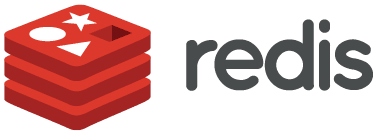Redis is an in-memory database that persists on disk. The data model is key-value, but many different kind of values are supported: Strings, Lists, Sets, Sorted Sets, Hashes, Streams, HyperLogLogs, Bitmaps.
We use Docker manifest for cross-platform compatibility. More details can be found on Docker's website.
To obtain the appropriate image for your architecture, simply pull ghcr.io/imagegenius/redis:latest. Alternatively, you can also obtain specific architecture images by using tags.
This image supports the following architectures:
| Architecture | Available | Tag |
|---|---|---|
| x86-64 | ✅ | amd64-<version tag> |
| arm64 | ✅ | arm64v8-<version tag> |
| armhf | ❌ |
The default configuration should be enough to get started.
Example snippets to start creating a container:
---
services:
redis:
image: ghcr.io/imagegenius/redis:latest
container_name: redis
environment:
- PUID=1000
- PGID=1000
- TZ=Etc/UTC
volumes:
- path_to_appdata:/config
ports:
- 6379:6379
restart: unless-stopped
Docker CLI (Click here for more info)
docker run -d \
--name=redis \
-e PUID=1000 \
-e PGID=1000 \
-e TZ=Etc/UTC \
-p 6379:6379 \
-v path_to_appdata:/config \
--restart unless-stopped \
ghcr.io/imagegenius/redis:latest
To configure the container, pass variables at runtime using the format <external>:<internal>. For instance, -p 8080:80 exposes port 80 inside the container, making it accessible outside the container via the host's IP on port 8080.
| Parameter | Function |
|---|---|
-p 6379 |
MQTT Port |
-e PUID=1000 |
UID for permissions - see below for explanation |
-e PGID=1000 |
GID for permissions - see below for explanation |
-e TZ=Etc/UTC |
Specify a timezone to use, see this list. |
-v /config |
Contains the configuration file |
All of our images allow overriding the default umask setting for services started within the containers using the optional -e UMASK=022 option. Note that umask works differently than chmod and subtracts permissions based on its value, not adding. For more information, please refer to the Wikipedia article on umask here.
To avoid permissions issues when using volumes (-v flags) between the host OS and the container, you can specify the user (PUID) and group (PGID). Make sure that the volume directories on the host are owned by the same user you specify, and the issues will disappear.
Example: PUID=1000 and PGID=1000. To find your PUID and PGID, run id user.
$ id username
uid=1000(dockeruser) gid=1000(dockergroup) groups=1000(dockergroup)
Most of our images are static, versioned, and require an image update and container recreation to update the app. We do not recommend or support updating apps inside the container. Check the Application Setup section for recommendations for the specific image.
Instructions for updating containers:
- Update all images:
docker-compose pull- or update a single image:
docker-compose pull redis
- or update a single image:
- Let compose update all containers as necessary:
docker-compose up -d- or update a single container:
docker-compose up -d redis
- or update a single container:
- You can also remove the old dangling images:
docker image prune
- Update the image:
docker pull ghcr.io/imagegenius/redis:latest - Stop the running container:
docker stop redis - Delete the container:
docker rm redis - Recreate a new container with the same docker run parameters as instructed above (if mapped correctly to a host folder, your
/configfolder and settings will be preserved) - You can also remove the old dangling images:
docker image prune
- 24.04.24: - rebase to alpine 3.19
- 15.06.23: - Initial Release.



